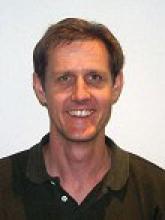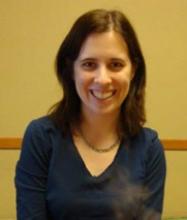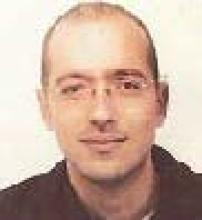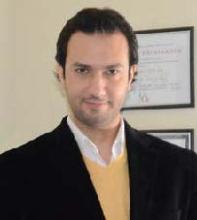Overview of Digital IC Design

Mr. Ryan Hirth
Technical Director
Broadcom
Thu, 04/18/2013
Abstract – An introduction into large scale digital IC design practices. This lecture will cover basic practices used to improve coding quality and design partitioning. An overview of various FIFOs, arbiters, and clock boundaries will be covered. The lecture will cover common rules-of-thumb practices to improve timing closure, verification, and testability of digital ICs.
Mr. Ryan Hirth is a Technical Director for Ethernet Access products at Broadcom. He is responsible for architecture and development of Ethernet Passive Optical Network (EPON) integrated circuits. Ryan was the Director of IC Engineer at Teknovus before the Broadcom acquisition in 2010. Ryan has developed over fifteen PON ICs. He has been a key technical contributor to the IEEE 802.3ah (1G-EPON), IEEE 802.3av (10G-EPON), and IEEE1904.1 (SIEPON) standards. Prior to Teknovus, he was ASIC Director at Terawave developing BPON ICs. He also held design engineering positions at Advanced Fibre Communication and 3Com. Ryan has B.S. in Electronic Engineering from California Polytechnic University, San Luis Obispo. Ryan has been granted 11 U.S. patents.
Concept to Product to Profit

Mr. Bill Seidel
President & CEO
America Invents
Thu, 04/04/2013
Abstract – Do you have a groundbreaking idea for a new product or service? Do you have a prototype and don’t know what to do next? If you’ve never run your own business, it may not be entirely clear if and how you can bring your innovation to the market successfully and reap the rewards. Do you set up your own business? Partner with someone? Pursue a license deal? What resources can help? Your journey begins with the recognition that ideas are plentiful and of little value, while successful products are rare and of great value. You must understand the product life cycle and be able to create a plan that will take you to your destination. Please join us to learn about the pathways and resources available to inventors, and begin to understand what it takes to reach success.
William Seidel. President and CEO of America Invents LLC, has over 30 years of experience in marketing and innovation. He has negotiated and executed license agreements with leading corporations and government entities. He has consulted for national laboratories on commercializing technology, and was a lecturer for 20 years at Berkeley teaching marketing, entrepreneurship & Innovation and at SF State teaching product design and product development. Bill is currently working on his forthcoming book, Productology.
Modeling and Managing Computers' Power Consumption

Dr. Suzzane Rivoire
Assistant Professor
Computer Science Dept., Sonoma State University
Thu, 03/14/2013
Abstract – Supercomputing and cloud computing facilities provide enormous amounts of computational power to scientists and everyday users alike. However, the high power consumption of these facilities threatens their ability to increase their performance in response to future demands. This work, conducted in collaboration with Microsoft Research-Silicon Valley, was the first to quantify the challenges of modeling the power consumption of large-scale computing clusters. We propose a high-level modeling approach to overcome these challenges and validate it across a range of hardware platforms and software applications. We also integrate our power models into a mechanism for enforcing variable hardware power budgets.
Dr. Suzanne Rivoire is an Assistant Professor of Computer Science at Sonoma State University. Her research interests include power-aware computing, computer architecture, and computer science education. She has a B.S. in Electrical Engineering from the University of Texas at Austin and M.S. and Ph.D. degrees in Electrical Engineering from Stanford University.
MIMO Wireless Communication Networks: Challenges and Future Perspectives

Dr. Charan Lichtfield
Visiting Professor
University of Greenwich, UK
Thu, 03/07/2013
Abstract – MIMO (Multiple Input, Multiple Output) Technology has long been proposed as a means to increase the spectral efficiency of wireless communication systems and it is presently revolutionizing the world of 4G Wireless Broadband Communications. MIMO enables higher information rates by adding spatial dimensionality which can be exploited to send more information rich signals. This has enabled contemporary wireless communication standards (e.g., WiFi and LTE) to operate within the broadband regime. This presentation will introduce MIMO technology showing how this has been applied to LTE (Long Term Evolution) and, furthermore, expatiate on applications in future wireless communication networks as they march towards the fifth generation (5G). A focal point of this presentation is to present research results for MIMO configurations in Wireless Cooperative Networking and Multiple User Overlays in Very Large MIMO Networks, both of which may find application in fifth generation systems. This research utilized a technology called Adaptive Multiuser Detection which is fundamental to enabling Very Large Distributed Arrays be practically feasible at minimal trade off to performance.
Dr. Charan Litchfield is an electrical engineer with over 10 years’ experience in Wireless and Digital Communication Networks. His research interests include MIMO Wireless Communication Systems, Spread Spectrum CDMA, Multiuser Detection, Adaptive Signal Processing, Estimation Theory and Information Theory. He has contributed numerous publications to high impact conferences and journals as well as leading industrial research in 3G networks focusing mainly on CDMA Multiuser Detection and Digital Beamforming. He has held the position of Senior Lecturer in Communication and Computer Networks at the University of Greenwich, UK and is currently consulting on research projects for Newfield Wireless. He obtained a Ph.D. from the University of Kent in 2006 where the title of his dissertation was Single User Receivers for Frequency Selective WCDMA Channels.
Metamaterials: A New Frontier in Engineering Science

Dr. Haider Khaleel
Assistant Professor
Engineering Science Dept., Sonoma State University
Thu, 02/21/2013
Abstract – The past decade has witnessed intensive research activities in the field of Metamaterials (MTMs) due to their fascinating and unique properties which are not found in nature. The concept of MTMs has introduced substantial enhancements and novel aspects in the fields of electromagnetics and optics. These aspects include the realization of magnetism at microwave and optical frequencies, negative refractive index, and the ability to control the propagation of electromagnetic waves. This presentation provides an overview on the fundamentals, recent advancements and future directions in the research of electromagnetic MTM. An introduction followed by a detailed elaboration on the design of the extraordinary electromagnetic properties of MTMs is presented. A number of intriguing phenomena and applications of MTMs are discussed, which includes: negative refractive index, single and double negative MTMs and the concept of left handed materials. Finally, an outlook on future directions of the MTMs research is presented.
Dr. Haider Raad Khaleel received the Ph.D. and M.S. degrees in Telecommunication Systems Engineering from the University of Arkansas at Little Rock (UALR), Little Rock, Arkansas, USA in 2012 and 2011, respectively; and another M.S. degree in Electrical and Computer Engineering from New York Institute of Technology in 2006. Currently, he serves as a visiting professor in the Department of Engineering Science, Sonoma State University, Rohnert Park, California. Dr. Khaleel has published 2 book chapters, and over 30 peer reviewed journal and conference papers on research fields of his interest which include: flexible and wearable antennas; antennas for Telemedicine and Wireless Body Area Networks, implantable antennas, Metamaterials, Electromagnetic Bandgap (EBG) structures, Artificial Magnetic Conductors (AMC), antennas for MIMO systems, and Global Positioning Systems. He also serves as an editor for the American Journal of Engineering and Applied Science, and as a technical reviewer for many IEEE journals and letters. Dr. Khaleel is also the recipient of the first place award of the Institute of Engineering and Technology 2012 Present Around the World, UALR’s Outstanding Teaching Support Award, and AAMI/TEAMS Academic Excellence Award in 2012.